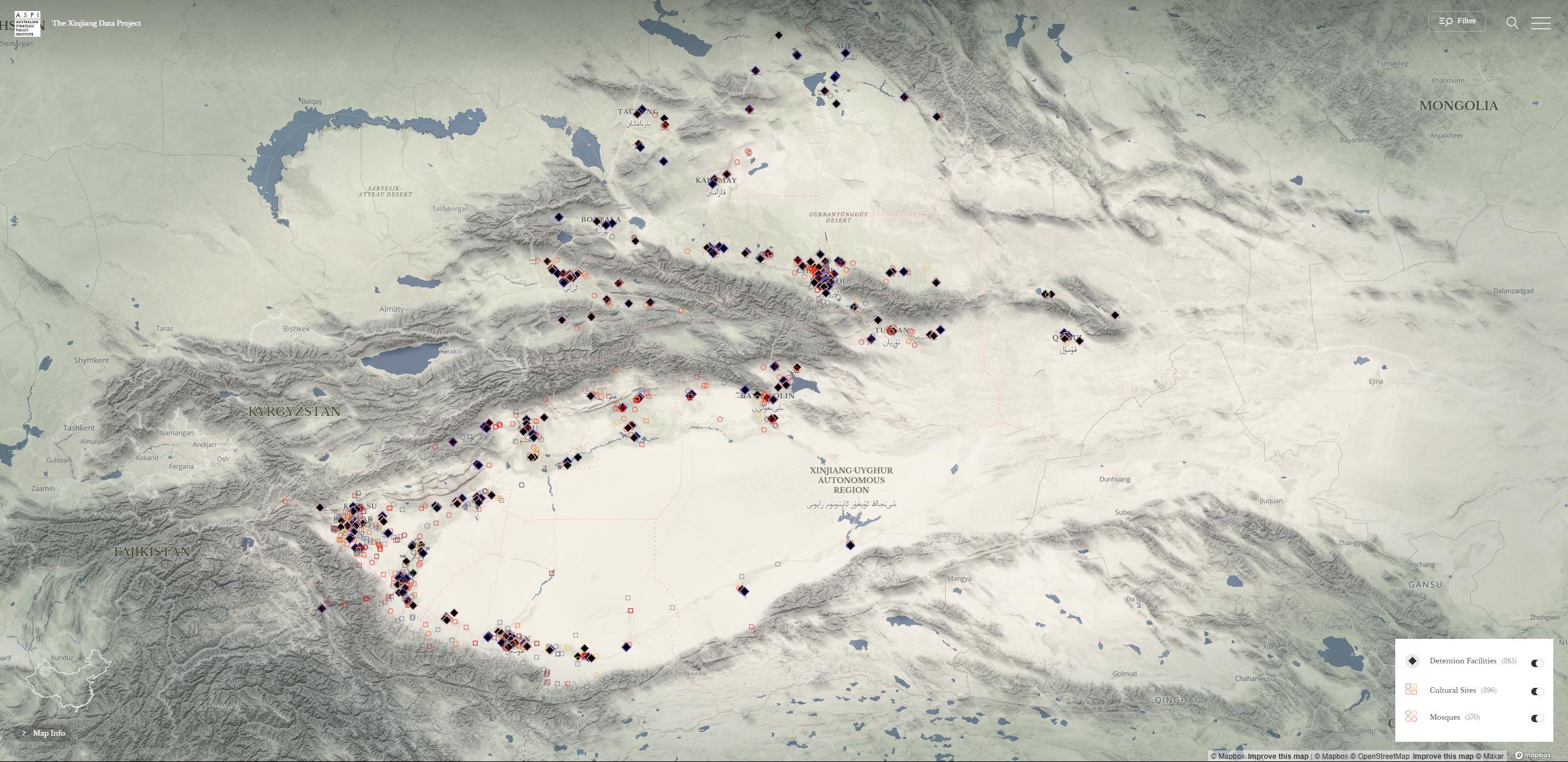Xinjiang Detention Facilities Map


Alex Cartwright
Senior Cartographer & GIS Specialist
Alex Cartwright is a renowned cartographer and geographic information systems specialist with over 15 years of experience in spatial analysis and data...
Geographic Analysis
What This Map Shows
The Xinjiang Detention Facilities Map provides a comprehensive overview of various detention and re-education centers located throughout the Xinjiang Uyghur Autonomous Region of China. This visualization highlights the geographic distribution of these facilities, which have been the subject of global scrutiny and concern due to allegations of human rights abuses and the suppression of cultural identities. By mapping these locations, we can better understand the scale and reach of these facilities across the region.
Deep Dive into Xinjiang Detention Facilities
The Xinjiang region has become infamous for its network of detention facilities, often referred to as internment camps. It's estimated that over a million Uyghurs and other Muslim minorities have been detained since 2017 under the guise of counter-terrorism measures. The primary purpose of these facilities is purportedly to engage individuals in vocational training and to combat extremism. However, numerous reports and testimonies reveal a different reality characterized by indoctrination, forced labor, and human rights violations.
Interestingly, the Chinese government initially denied the existence of such camps, labeling them as "vocational training centers" designed to provide education and job skills. However, as evidence mounted, the narrative shifted, leading to a more defensive posture from Beijing, which now claims these facilities are essential for national security and social stability. This raises critical questions about the balance between state security and individual freedoms.
Geographically, the detention centers are concentrated in specific areas of Xinjiang, particularly in urban centers like Ürümqi and Kashgar, which have attracted significant international attention. The map illustrates not just the locations but also hints at the broader socio-political landscape, where these facilities are strategically placed to exert control over the local populations. The spatial distribution suggests a calculated approach to suppress dissent and assimilate minority cultures into the dominant Han Chinese culture.
Regional Analysis
When analyzing the Xinjiang Detention Facilities Map, we can observe distinct patterns in the geographic distribution of these centers. For example, the southern regions, which include cities like Kashgar and Hotan, have the highest concentration of detention facilities. This area is predominantly inhabited by Uyghurs, and the camps are often situated near urban centers to facilitate surveillance and control.
In contrast, the northern areas, which are less populated by ethnic minorities, exhibit fewer facilities. This difference is not merely a reflection of population density; it also highlights the Chinese government's strategic focus on regions where it perceives a higher risk of separatism or dissent. The map serves as a stark reminder of the political climate in Xinjiang, where state security measures disproportionately target specific ethnic groups.
Moreover, what's fascinating is how the construction of these facilities has reshaped the local economy. Many of these camps are reported to have turned into sites for forced labor, making products for both domestic consumption and export. As a result, regions surrounding these facilities have seen an influx of construction and related jobs, albeit under conditions that raise ethical concerns.
Significance and Impact
The implications of the Xinjiang Detention Facilities extend far beyond the borders of China. As global awareness increases, the situation has sparked international condemnation and sanctions against Chinese officials. Human rights organizations continue to call for investigations into the practices occurring within these facilities, and several countries have raised concerns about the potential for genocide.
Furthermore, the ongoing situation in Xinjiang reflects broader themes of state control, cultural suppression, and human rights that resonate globally. It's essential to understand how this regional issue aligns with international human rights standards and the responsibilities of nations to protect vulnerable communities.
As we look to the future, the landscape of Xinjiang remains uncertain. Will the international community continue to apply pressure, or will geopolitical interests overshadow human rights concerns? The Xinjiang Detention Facilities Map serves as a critical tool for understanding not just the geography of oppression, but the human stories behind the statistics. In a world increasingly interconnected by information, shedding light on such issues is vital for advocacy and change.
Visualization Details
- Published
- August 17, 2025
- Views
- 100
Comments
Loading comments...